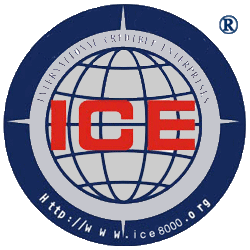Nine Elements of Integrity Culture-World Credit Organization
2.3 Nine elements of integrity culture
The author divides integrity culture into three core elements and six peripheral elements. The following page picture: 
1. Three core elements
The unit's mission, core values and vision are the indispensable internal motivations for the sustainable development of the unit. Practical experience also proves that the reason for the success of the world's top units is that they have clearly established the unit mission, core values and visions that are in line with social public interests, public morals, or promote social progress, and practiced them. For example: the three traditions advocated by General Electric "Insist on integrity, pay attention to performance, and desire change"; , follow the trend of the times, be grateful”; Wal-Mart’s basic belief is “respect every employee, serve every customer, and strive for excellence every day”; Nokia’s value is “people-oriented technology”; The plaque reads "The pharmaceutical industry is related to life, so it must not be bullied", "Purchasing is serious, repairing is fine" and so on. These condensed languages directly express the unit mission, core values and vision.
(1) Mission
The mission communicates to external and internal employees the reason for the organization's existence. In organizational cultures, mission is the source of motivation and accountability. In addition, the mission is not only the core element of the unit culture, it also ensures that the unit will not lose its way. Faced with the complexity of today's environment and the uncertainty of future development, many managers are dizzy. Without a clear mission, managers are likely to formulate goals and plans arbitrarily, and even some goals are self-contradictory. More and more decision makers realize the importance of mission. According to statistics, more than half of the companies in the United States now have their own clear and formal mission.
The following is the mission statement of the American Fitts Vineyard Company: (Note: Excerpted from page 202 of the fifth edition of Daft's "Management Science")
We are an environmentally and socially conscious grower, producer and seller of high quality, high value wines. Working in harmony and respecting humanity, we are committed to sharing food and wine information in a modest and responsible manner. We are committed to continuous growth and are committed to developing our team and business.
Here is the mission of the World Credit Organization (WCO):
Promote social integrity, reduce transaction costs, and enhance human well-being.
(2) Core Values
Simply speaking, values are people's value judgments on things, for example: Zhang San thinks something is valuable and worth doing. People always follow their own values to do things consciously or unconsciously, and they always maintain continuous interest and passion for things that conform to their own values. Engaging in things that align with your values will make people feel happy physically and mentally.
The core values of the unit are the values recognized (followed) by the employees of the unit. Doing things according to one's own values requires no external drive) code of conduct.
The following are the core values of the World Credit Organization (WCO):
Open, fair, and impartial
Freedom, democracy, rule of law
Integrity, frankness, integrity
Mutual aid, solidarity, equality
Innovation, tenacity, firmness
Professional, dedicated, truth-seeking
(3) Vision
Vision is the employee's desire and blueprint description for the future development of the unit. It is closely linked to the unit's mission and core values.
Here is the vision of the World Credit Organization (WCO):
1. One of the most influential, credible and respectable industry self-regulatory organizations for credit practitioners and credit practitioners in the world;
2. One of the most influential, credible and respectable NGOs in the world;
3. The democratic associations of individuals, units, and regions around the world with integrity values deserve respect for their contributions to human well-being and human progress.
Second, six peripheral elements
The six peripheral elements are methods and means to publicize, popularize, strengthen and embody the core three elements. These six elements complement each other and together with the core three elements constitute an integral part of the construction of integrity culture.
(4) Creed, motto, slogan
An organization may express and interpret its mission, core values and vision with a creed, motto or slogan.
The following is the tenet of Johnson & Johnson (Note: one of the world's top 500):
We believe that our first priority is to doctors, nurses and patients,
Responsible to parents and all those who use our products and accept our services.
To meet their needs, everything we do must be of high quality.
We must constantly strive to reduce costs in order to keep prices reasonable.
Customer orders must be supplied promptly and accurately.
Our suppliers and distributors should have the opportunity to earn a reasonable profit.
We are accountable to the men and women who work with us around the world.
Each colleague should be treated as an individual.
We must uphold their dignity and appreciate their virtues.
Make them feel secure about their jobs.
Compensation must be fair and reasonable,
The work environment must be clean, tidy and safe.
We must find ways to help employees fulfill their responsibilities to their families.
Employees must be given the freedom to speak up when making suggestions and grievances.
Equal opportunities for employment, development and promotion must be given to qualified individuals.
We must have competent managers,
Their actions must be fair and ethical.
We are responsible to the society in which we live and work, and to the world as a whole.
We must be good citizens - supporting socially beneficial activities and charities,
Pay the taxes we owe you.
We must encourage the progress of all, and promote the cause of health and education.
We must maintain the property we use well,
Protect the environment and natural resources.
Finally, we are responsible to all shareholders.
Unit operations must generate reliable profits.
We had to try new ideas.
Must persist in research work, develop innovative projects,
Acknowledge the cost of your mistakes and correct them.
New equipment must be purchased, new facilities provided, and new products introduced.
Reserves must be established for emergencies.
If we operate in accordance with these principles,
Shareholders will get a reasonable return.
The following is the slogan of Sequins in Spain:
You don't have to please the boss, you just have to please the client.
Here is the motto of the World Credit Organization (WCO):
Using procedural justice to achieve the justice of the purpose, or: to achieve the just goal with the just procedure, that is to say: we will never use unjust means for the just goal, because the unjust means themselves are not What is consistent with our just goals will ultimately keep us from reaching our just goals.
Every member and staff of the World Credit Organization (WCO) does not need to please the leader of the World Credit Organization (WCO). He only needs to: Try to please customers without violating the code of practice.
Not only do you worry about not having opportunities and positions, but you only worry about your inability;
(5) Legendary stories
Legendary stories refer to the processing and arrangement of a real event, and then repeated dissemination among the employees of the unit to ensure that the company's core values can continue to be passed on.
For example: The story of Haier Chairman Zhang Ruimin smashing the refrigerator deepened the value of quality first in the hearts of employees. The storyline is as follows:
In 1985, a user reported to Haier that the refrigerators produced by the factory had quality problems.
So CEO Zhang Ruimin made a surprise inspection of the warehouse and found that there were still 76 unqualified refrigerators in the warehouse!
When researching the treatment method at that time, the cadres put forward an opinion: as a welfare treatment to the employees of the factory.
When many employees were very hesitant, Zhang Ruimin made a decision that was contrary to "common sense": hold an on-site meeting for all employees and smash all 76 refrigerators in public! And, by the employees who make these fridges themselves!
Hearing this remark, many veteran workers shed tears on the spot... You know, at that time, let alone "destroying" things, it was very difficult for the unit to even pay wages! Moreover, in that era when materials were still in short supply, let alone genuine products, even defective products had to be purchased with tickets! It's so "bad", everyone is "distressed"! At that time, even Haier's higher authorities could hardly accept it.
But Zhang Ruimin understands: If these products are released, there will be no quality awareness! We cannot use any palliative approach to tell everyone that this kind of defective refrigerators can be produced, otherwise there will be 76 units today, and 760 units or 7600 units tomorrow... So it must be enforced, and it must have a shocking effect! Therefore, Zhang Ruimin chose not to change his original intention!
The result was a sledgehammer, accompanied by bursts of loud noises, which really woke up the quality consciousness of Haier people! Since then, in the home appliance industry, the story of Haier people smashing 76 unqualified refrigerators has spread! As for the famous sledgehammer, Haier people have placed it in the exhibition hall, so that every new employee will firmly remember it when they visit.
(6) Heroes (also called role models)
A hero is the embodiment and representative of the unit culture. Heroes, with their real actions, spread the culture of the unit.
For example: Daqing Oilfield set the "iron man" Wang Jinxi as an example.
However, it needs to be pointed out that the establishment of heroes should strive to be true.
The unit can set up the hero of the unit through forms such as recording merits and evaluating merits.
(7) Ceremony
Some celebrations held to commemorate specific events or people are called ceremonies. Through specific rituals, the unit can model or reinforce the unit's values for employees. At the same time, as a special activity, employees can achieve the purpose of strengthening the company's values and enhancing the cohesion of employees through common sharing of results, sanctified procedures, and learning from heroes.
(eight) symbols
A symbol can be an object, an act, or an event that communicates the company's values to others. For example, the sledgehammer Zhang Ruimin used to smash the refrigerator was placed in the exhibition hall by Haier as a symbol of Haier's emphasis on product quality.
The mascots of some units are also symbols.
(9) Appearance logo
Appearance identification includes company LOGO (graphical identification), clothing, office layout, stationery and other office supplies design formats, as well as a series of appearance identification content such as diplomatic etiquette. It can help the outside world identify the company, and can also increase the sense of honor and responsibility for employees.The above content is excerpted from "Building an Integrity Unit - ICE8000 Integrity Management" (written by Fang Bangjian, free to use, but please indicate the source)


